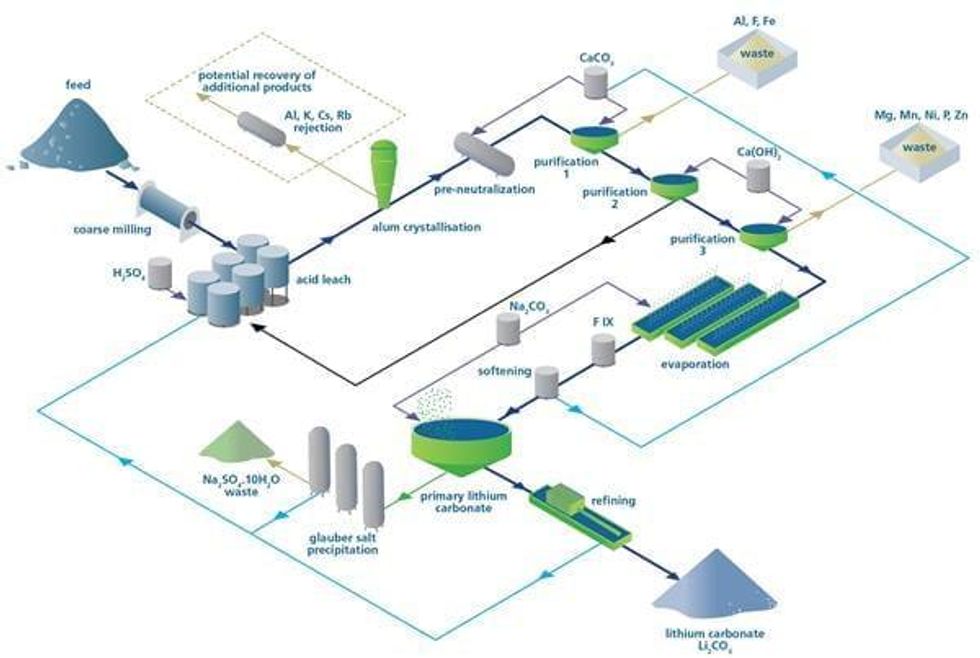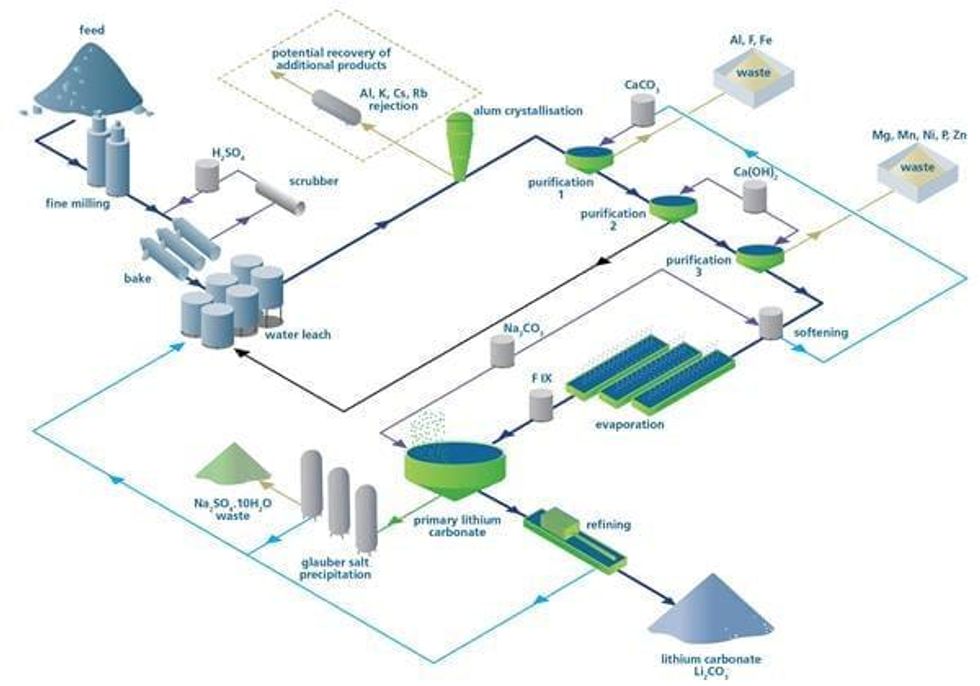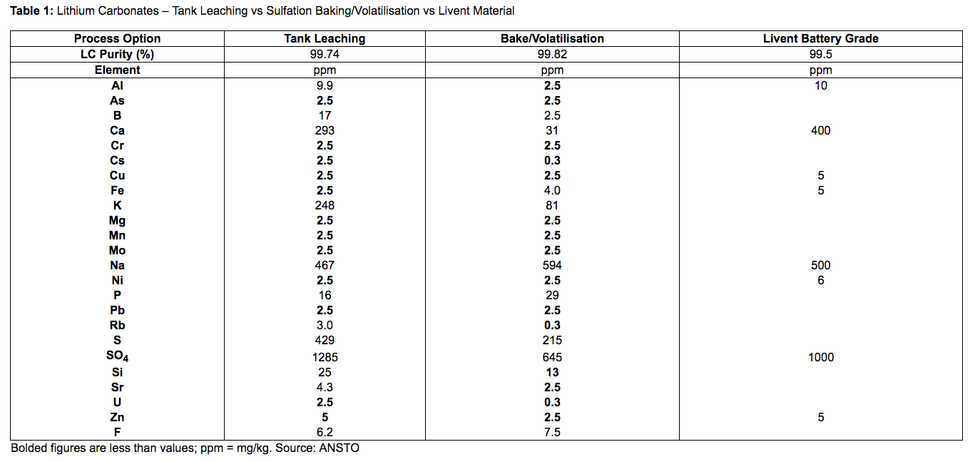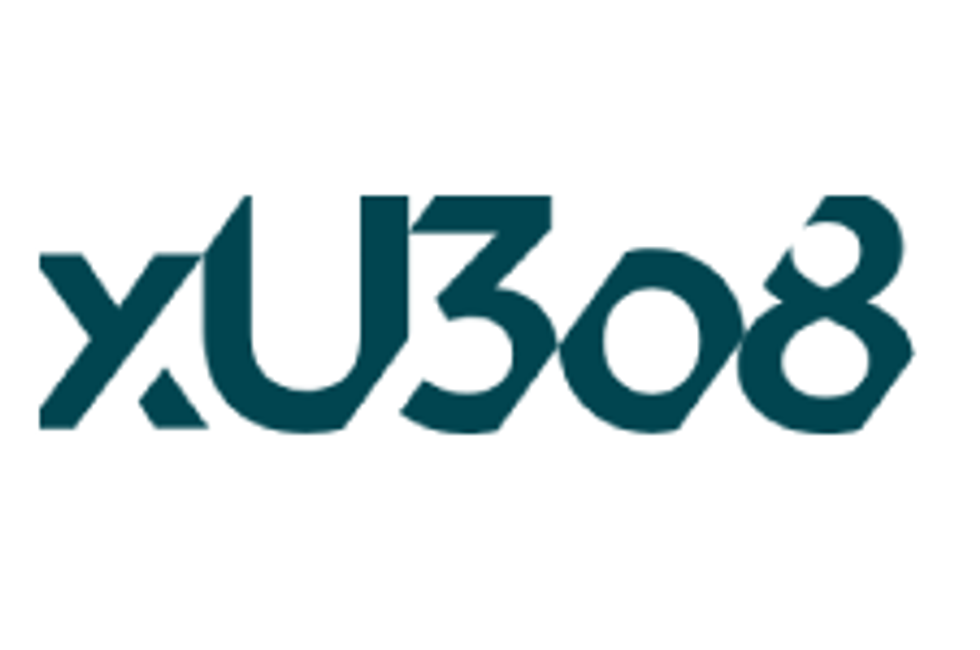Plateau Energy Metals Announces Successful Metallurgical Program Results at its Falchani Lithium Project

Plateau Energy Metals Inc. (“Plateau” or the “Company”) (TSXV:PLU, OTCQB:PLUUF) is pleased to announce the completion of the Phase II metallurgical test work program for its Falchani lithium project (“Falchani”) at ANSTO Minerals (“ANSTO”) laboratories.
Plateau Energy Metals Inc. (“Plateau” or the “Company”) (TSXV:PLU, OTCQB:PLUUF) is pleased to announce the completion of the Phase II metallurgical test work program for its Falchani lithium project (“Falchani”) at ANSTO Minerals (“ANSTO”) laboratories. Working alongside ANSTO were DRA Global (“DRA”), the lead for the upcoming Falchani preliminary economic assessment (“PEA”) and M.Plan International Limited (“M.Plan”), owner’s team advisor for Falchani.
Following extensive test work on multiple up-front process steps, two preferred routes – tank leaching and sulfation baking – have been selected to focus on the extraction of lithium from the Falchani mineralized material. Specific flowsheets have been developed and tested for both process routes and have shown that a high purity lithium carbonate chemical product (“LC” or “Li2CO3”) can be produced from each.
Figure 1
Figure 2
Highlights
- All tested processes produced strong overall recoveries (mineralized material to LC) with reasonable reagent addition figures:
° Tank Leach (95 °C): 77% – 81% overall recovery via a 24-hour up-front acid leach with total sulfuric acid addition of 370 kg per tonne of mineralized material, followed by conventional purification and precipitation of a high purity (99.74%) Li2CO3.
° Sulfation Baking (200 °C): 72% – 82% overall recovery via a six (6) hour baking and acid recovery step with net sulfuric acid addition (after acid recycling) of 330 kg per tonne of mineralized material, followed by conventional purification and precipitation of a high purity (99.82%) Li2CO3. - Up-front roasting with sulfate and chloride reagents at 900 oC was examined, and although the resultant leach solutions contained very low levels of impurities, the extraction of lithium was limited to about 80%. Further test work following the PEA would be required to improve the extraction of lithium and provide an alternative to the two preferred process options examined as part of the trade-off study.
- Lithium carbonate produced using both up-front tank leaching and sulfation baking process steps are of high purity battery grade (>99.5%) (refer to Table 1).
- Conventional downstream process steps to yield a Li2CO3 product are employed for both tank leaching and sulfation baking routes.
- Both processing routes are being optimized by DRA Global with input from ANSTO and M.Plan. Further optimization of these processing routes to be pursued following the PEA.
- Trade-off study work, ahead of the PEA, has now been completed, which has focused on both the tank leach and sulfation baking processing routes.
- Processing options identified for potential additional revenue streams from other products such as sulfate of potash (“SOP”) fertilizer (K2SO4) (refer to Figure 1).
“We took the time to conduct a thorough and robust analysis of Falchani mineralization over the past eight months as a build up to our pending PEA,” Alex Holmes, CEO of Plateau, commented. “We have been working closely with ANSTO, DRA and M.Plan to identify areas for potential optimization, some of which will be incorporated into the upcoming PEA. Further, the test work demonstrated the ability to reduce impurities to extremely low levels and produce a high value end-product at site, in Peru. Capturing most of the value chain will be one key differentiator for Falchani.”
Trade-off Study
The trade-off study is complete and utilized iterative results of the metallurgical test work over the past couple of months. Following receipt of the final results, the trade-off study focused on both the tank leach and sulfation bake up-front process steps. The downstream purification and precipitation steps employed with each of the up-front process options are similar. It was determined that, at present, the tank leach option will be the focus of the base case for the pending PEA. However, future optimization work will continue to examine the tank leach, sulfation bake and roasting process routes, as well as other potential by-product streams.
Next Step
The PEA has been advancing in parallel with the metallurgical work program and trade-off study. The complete metallurgical work program and some optimization opportunities identified by M.Plan, ANSTO and DRA will be incorporated into the PEA expected in a few weeks.
Metallurgical Work Program Results
Tank Leach (95 °C)
- Test work on the sulfuric acid (H2SO4) tank leach process route demonstrated that with a P80 150 microns (“µm”) crush size and optimized residence time of 24 hours, 89% of lithium reports to the leach solution. The recovery through the subsequent downstream purification steps is greater than 90%, corresponding to an overall recovery of lithium of between 77% – 81% (mineralized material to Li2CO3). Recovery is dependent on acid addition (refer to below).
- Preliminary flow sheet design includes conventional crushing, tank or vat leach, purification and crystallization of Li2CO3 (refer to Figure 1).
- Various size fractions ranging from 38 µm to 2mm crush size were tested as part of this ANSTO work program and the prior TECMMINE program in Peru. A clear trend of a lower acid consumption as the granulometry became coarser was identified. Based on studies conducted to date by ANSTO on different size fractions, there are potential opportunities to optimize the acid addition using different size fractions.
- Key results from this process route include:
° 89% extraction of lithium at 95 oC after 24-hour leaching.
° 370 kg of H2SO4 addition per tonne of mineralized material for 77% – 81% overall recovery (470 kg of H2SO4 addition per tonne of mineralized material for 89% overall recovery).
° Leaching at 95 °C provides the maximum extraction of lithium at this stage.
° Following conventional purification of the leach solution, precipitation of high purity (99.74%) Li2CO3 was produced (refer to Table 1).
A photo accompanying this announcement is available at https://www.globenewswire.com/NewsRoom/AttachmentNg/fed51a0b-b1e0-494f-9e43-6b2d8fa33df0
Sulfation Baking (200 °C)
- Test work on the sulfation baking process route has demonstrated that with a P80 10 µm crush size, mixing the mineralized material with sulfuric acid (H2SO4) and heating it to 200 °C for four (4) hours followed by volatilisation of the acid at 320 °C for two (2) hours resulting in recovery of 65% of it prior to simple water leaching.
- Inclusion of the volatilisation step allows recycling of the excess acid, reducing both the cost of the acid required up-front and neutralising reagents downstream.
- Water leaching of the acid baked mineralized material results in extraction of 87% of the lithium. The recovery through the subsequent downstream purification steps is greater than 94%, corresponding to an overall recovery of lithium of between 72% – 82%.
- Preliminary flow sheet design includes conventional crushing, rotary kilns for heating the mineralized material and volatilising the acid, leaching, purification and crystallization of Li2CO3 (refer to Figure 2).
- Various size fractions ranging from 10 µm to 75 µm crush size were tested as part of this ANSTO work program and the prior TECMMINE program in Peru. Future work will include the optimization of the size fraction-reagent-recovery relationship.
- Key results from this process route include:
° 87% extraction of lithium in water leaching after baking of the mineralized material and acid at 200 oC for four (4) hours and a volatilisation step at 320 oC for two (2) hours.
° 699 kg of H2SO4 initial addition per tonne of mineralized material, volatilisation step recycles 65% of H2SO4 not consumed, resulting in net H2SO4 addition of 330 kg per tonne of mineralized material.
° Following conventional purification of the leach solution, precipitation of high purity (99.82%) Li2CO3 was produced (refer to Table 1).
A photo accompanying this announcement is available at https://www.globenewswire.com/NewsRoom/AttachmentNg/f0a9b8fa-832d-4ed0-968b-9b4c18ca4499
Roasting (900 °C)
- Test work on the roasting process route focused on a chloride roast and demonstrated that with a P80 150 µm crush size, adding a mixture of chloride-based salts to the mineralized material and heating it to 900 °C followed by simple water leaching (a two hour process), up to 78% of lithium reports to the leach solution. A precipitate from this process route has not been pursued at this time. Sulfate roasting was also tested as a process route during this test work program.
- The benefits of these process routes are that all impurities calcinate during the roast process, simplifying impurity rejection, and as a result the leach solution contained negligible to trace amounts of impurities. This would allow for a simpler downstream purification of the leach solution which in turn increases the potential for a high purity Li2CO3 or lithium hydroxide. However, the ANSTO work identified that the consumption rate of the main reagent, calcium chloride (CaCl2) in this case, made this process route cost prohibitive. Further work will be pursued following the PEA to evaluate other lower cost chloride reagents that may provide similar reactivity.
- The conceptual flow sheet for this up-front processing option involves conventional crushing, rotary kilns for heating the mineralized material, leaching and crystallization. No further technical work was conducted on this process route at this time.
- Key results from this process route include:
° Up to 78% extraction of lithium after two (2) hours from reagent addition through roasting to water leaching.
° Various ranges of chlorides additions were tested from 200 kg to 1,000 kg per tonne of mineralized material with lithium extraction in aqueous solution ranging from 56% – 78%, respectively.
Future Optimization Potential
ANSTO and DRA Global have identified several areas for future optimization of the work program results, including:
- Potential for a further increase in Li2CO3 purity with additional refining on site.
- Potential for inclusion of process steps aimed at value-added by-products and test work following the PEA will be conducted to evaluate the potential product streams, such as SOP fertilizer (K2SO4) (refer to Figure 1).
- Potential for reduction in the residence time of the up-front sulfation baking/volatilisation step may result in the use of different process plant equipment sizing.
ANSTO utilized a 220 kg bulk sample of mineralized material representative of the lithium-rich tuff from the Falchani project area to conduct the metallurgical programs. Further information about the metallurgical work programs conducted on the Falchani lithium-rich mineralization is available in the Company’s October 4, 2018 press release.
Investor Relations Advisor
Plateau is also pleased to announce that it has engaged strategic investor relations advisory firm, RADIUS IR (“RADIUS”), to assist the Company with US-based investor awareness initiatives. The Company will compensate RADIUS US$4,500 for an initial term of 45 days of service.
Qualified Person
Doug Collier (FAusIMM) of ANSTO Minerals, an Independent Qualified Person as defined by National Instrument 43-101 Standards of Disclosure for Mineral Projects, has reviewed and approved the scientific and technical information contained in this news release.
About ANSTO Minerals
ANSTO Minerals is an Australian government owned international mining consultancy group located in Sydney, Australia, with an experienced team of 60+ engineers, metallurgists, chemists, and scientists who have been providing consulting services and process development services to the mining and minerals processing industries for well over 35 years. ANSTO has world-leading expertise in uranium mineralized material processing, rare earth processing, zirconium/niobium/hafnium processing, base metals processing, lithium processing (brines and hard rock), and radioactivity control and management.
About M.Plan
M.Plan International Limited is a joint venture between two internationally recognized consulting companies, Micon International Limited and Dorfner Anzaplan GmbH, combining their expertise in global geological and mining consulting with analytics, processing and engineering with significant experience in the battery metals sector.
M.Plan has deep project experience in the specialty minerals and metals sector, from initial mineral resource estimation through to process design, engineering design and project development. M.Plan and its joint venture owners have been involved in several lithium projects globally and hundreds of development studies in the mining sector, including independent lenders’ engineer assignments and as due diligence lead for multiple European and North American capital providers.
About DRA Global
DRA Global is a diversified global engineering, project delivery and operations management group, with an impressive track record spanning more than three decades. DRA, through its wholly owned subsidiary DRA Met-Chem, based in Montreal, as well as their regional offices in Perth and Cape Town, possess significant lithium process and metallurgical experts who are able to identify and develop the process requirements, through flowsheet development to the selection of process equipment, in order to minimize costs and ensure overall plant efficiency.
About RADIUS IR
RADIUS is a full-service investor relations firm leveraging 18 years of experience providing strategic awareness across all investor mediums from road show events to daily outreach targeting its institutional, retail, and media networks. More information about RADIUS can be found on their website.
About Plateau Energy Metals
Plateau Energy Metals Inc., a Canadian exploration and development company, is enabling the new energy paradigm through exploring and developing its Falchani lithium project and Macusani uranium project in southeastern Peru. The Company, with mineral concessions covering over 93,000 hectares (930 km2), controls all reported uranium mineral resources known in Peru and has significant and growing lithium mineral resources, all of which are situated near infrastructure.
Neither TSX Venture Exchange nor its Regulation Services Provider (as that term is defined in the policies of the TSX Venture Exchange) accepts responsibility for the adequacy or accuracy of this release.
Forward Looking Information
This press release includes certain forward-looking information and forward-looking statements (collectively “forward-looking statements”) concerning the Company’s plans and expectations related to its properties, including, but not limited to, anticipated completion and timing of a maiden PEA for the Falchani lithium project and other technical work, further metallurgical test programs and the timing and potential optimization results related to the foregoing. Forward-looking statements are frequently identified by such words as “may”, “can”, “will”, “plan”, “expect”, “anticipate”, “estimate”, “intend”, “indicate”, “scheduled”, “target”, “goal”, “potential”, “subject”, “efforts”, “option” and similar words or the negative connotations thereof, referring to future events and results. Forward-looking statements are based on the current opinions and expectations of management. Although the Company believes that the current opinions and expectations reflected in such forward-looking statements are reasonable based on information currently available to management, undue reliance should not be placed on forward-looking statements since the Company can provide no assurance that such opinions and expectations will prove to be correct. All forward-looking statements are inherently uncertain and subject to a variety of assumptions, risks and uncertainties, including risks and uncertainties relating to the interpretation of drill results, the geology, grade and continuity of mineral deposits; the possibility that any future exploration, development or mining results will not be consistent with our expectations; mining and development risks, including risks related to accidents, equipment breakdowns, labour disputes (including work stoppages and strikes) or other unanticipated difficulties with or interruptions in exploration and development; the potential for delays in exploration or development activities; risks related to commodity price and foreign exchange rate fluctuations; risks related to foreign operations; the cyclical nature of the industry in which we operate; risks related to failure to obtain adequate financing on a timely basis and on acceptable terms or delays in obtaining governmental approvals; risks related to environmental regulation and liability; political and regulatory risks associated with mining and exploration; risks related to the certainty of title to our properties; risks related to the uncertain global economic environment; and other risks and uncertainties related to our prospects, properties and business strategy, as described in more detail in Plateau Energy Metals’ recent securities filings available at www.sedar.com. Actual events or results may differ materially from those projected in the forward-looking statements and Plateau cautions against placing undue reliance thereon. Except as required by applicable securities laws, neither Plateau nor its management assume any obligation to revise or update these forward-looking statements.
Click here to connect with Plateau Energy Metals Inc. (TSXV:PLU) for an Investor Presentation.
Source: www.globenewswire.com








